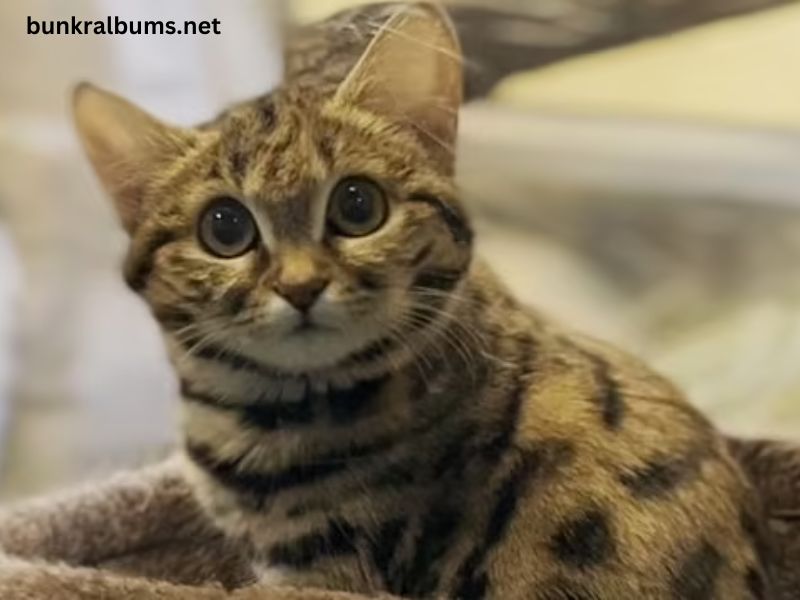Nestled in the picturesque landscape of Salt Lake City, Utah, Hogle Zoo is home to a diverse array of wildlife from around the globe. Among the many fascinating species residing there, one of the most intriguing is the black-footed cat (Felis nigripes). This small but captivating feline is not just a highlight of the zoo; it also plays a vital role in conservation efforts and education about the rich biodiversity of Africa. In this article, we will delve into the life of the black-footed cat, its significance in the ecosystem, and its presence at Hogle Zoo.
A Closer Look at the Black-Footed Cat
Physical Characteristics
The black-footed cat is a small wild cat native to Southern Africa, particularly the arid regions of Botswana, Namibia, and South Africa. Weighing between 5 to 12 pounds and measuring about 14 to 24 inches in length, these cats are compact and agile, designed for hunting in their natural habitat.
Their fur is short and typically sandy or tawny in color, which helps them blend into the grasslands and savannas. The distinguishing feature of the black-footed cat is, as the name suggests, its black feet. This characteristic is not just for show; the dark coloration provides camouflage when hunting, making it less visible to both prey and predators.
Behavior and Diet
Black-footed cats are primarily nocturnal, preferring to hunt during the cooler night hours. Their diet consists mainly of small mammals, birds, and insects. One of the most remarkable aspects of their hunting behavior is their incredible agility and speed, allowing them to catch prey with surprising efficiency. They are known for their pouncing techniques, reminiscent of a small leopard, using their acute senses to locate and ambush prey.
Reproduction and Lifespan
In the wild, black-footed cats typically live for about 10 to 12 years, while in captivity, they can live longer, sometimes exceeding 15 years. Breeding usually occurs throughout the year, with females giving birth to litters of one to four kittens after a gestation period of about 63 to 68 days. The kittens are born blind and rely on their mother for protection and nourishment until they are old enough to venture out on their own.
Conservation Status
The black-footed cat is classified as “Least Concern” by the International Union for Conservation of Nature (IUCN), but it faces threats from habitat loss and human-wildlife conflict. In some regions, they are also hunted for their fur, although this is not widespread. Conservation efforts are crucial to ensure that this species remains stable in the wild.
Hogle Zoo’s Conservation Initiatives
Hogle Zoo plays an active role in conservation and education, not just for black-footed cats but for various species across the globe. By providing a safe environment for these cats, the zoo helps to raise awareness about the challenges they face in the wild. Through educational programs, the zoo teaches visitors about the importance of preserving their natural habitats and the intricate balance of ecosystems.
The Black-Footed Cat at Hogle Zoo
Exhibits and Viewing
At Hogle Zoo, visitors have the unique opportunity to observe black-footed cats in a carefully designed exhibit that mimics their natural habitat. The enclosure features climbing structures, hiding spots, and areas to explore, allowing these agile hunters to display their natural behaviors.
The zoo staff takes great care to ensure that the cats are comfortable and healthy. This involves providing a varied diet that reflects their natural feeding habits, as well as enrichment activities to stimulate their physical and mental well-being. From puzzle feeders to climbing challenges, these activities help keep the black-footed cats engaged and active.
Educational Programs
Hogle Zoo emphasizes the importance of education in conservation. The black-footed cat serves as an ambassador for its species, helping to inform the public about the challenges faced by wild cats in Africa. The zoo hosts various educational programs, including guided tours, talks, and interactive exhibits, aimed at all age groups.
One of the key messages conveyed through these programs is the importance of biodiversity and the role each species plays in the ecosystem. By understanding the black-footed cat’s role as a predator, visitors gain insight into the delicate balance that exists within their habitat.
The Importance of Zoos in Conservation
Zoos, like Hogle Zoo, are crucial in the fight against extinction. They not only provide a sanctuary for endangered and threatened species but also contribute to breeding programs aimed at preserving genetic diversity. These programs can help to reintroduce animals back into their natural habitats when conditions allow.
Hogle Zoo participates in the Species Survival Plan (SSP) for black-footed cats, which is coordinated by the Association of Zoos and Aquariums (AZA). This plan ensures that breeding is conducted thoughtfully and that the genetic health of the population is maintained. The zoo collaborates with other institutions to exchange individuals, promoting genetic diversity and strengthening the overall population.
The Future of the Black-Footed Cat
As climate change continues to impact habitats around the world, the future of the black-footed cat remains uncertain. Conservation organizations are working tirelessly to address these issues through habitat protection and restoration efforts.
In addition to habitat conservation, education plays a vital role in ensuring the long-term survival of black-footed cats. By raising awareness and fostering a sense of responsibility towards wildlife, we can encourage future generations to take action to protect these remarkable animals.
How You Can Help
Visitors to Hogle Zoo can contribute to conservation efforts in several ways. Simply by attending the zoo, they support the care and preservation of the animals. Additionally, participating in educational programs and spreading the word about the importance of wildlife conservation can have a far-reaching impact.
Donations to conservation funds, volunteering, or supporting wildlife organizations focused on habitat preservation can also make a difference. Every action counts, and together, we can help ensure that species like the black-footed cat continue to thrive in the wild.
Conclusion
The black-footed cat is a fascinating and vital part of the biodiversity that exists in our world. At Hogle Zoo, these captivating felines not only enchant visitors but also serve as crucial ambassadors for conservation. Through education, breeding programs, and habitat protection efforts, we can work together to ensure the future of this remarkable species and many others. As stewards of the earth, it is our responsibility to protect the delicate balance of ecosystems and preserve the rich tapestry of life that makes our planet so extraordinary.



